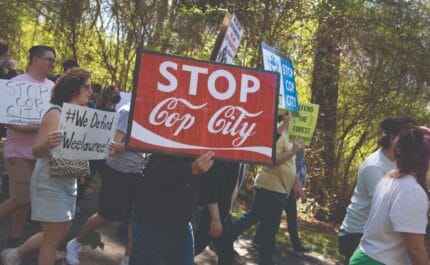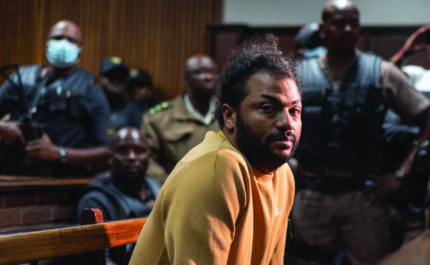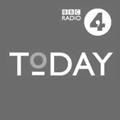Ciro and Che
Ciro Bustos was one of Che Guevara’s most trusted soldiers – yet he was painted as the Latin Revolution’s Judas, selling out his comrades and leading Che’s killers to his doorstep. Rachel Halliburton travelled to Sweden to meet a man fighting to reclaim his history
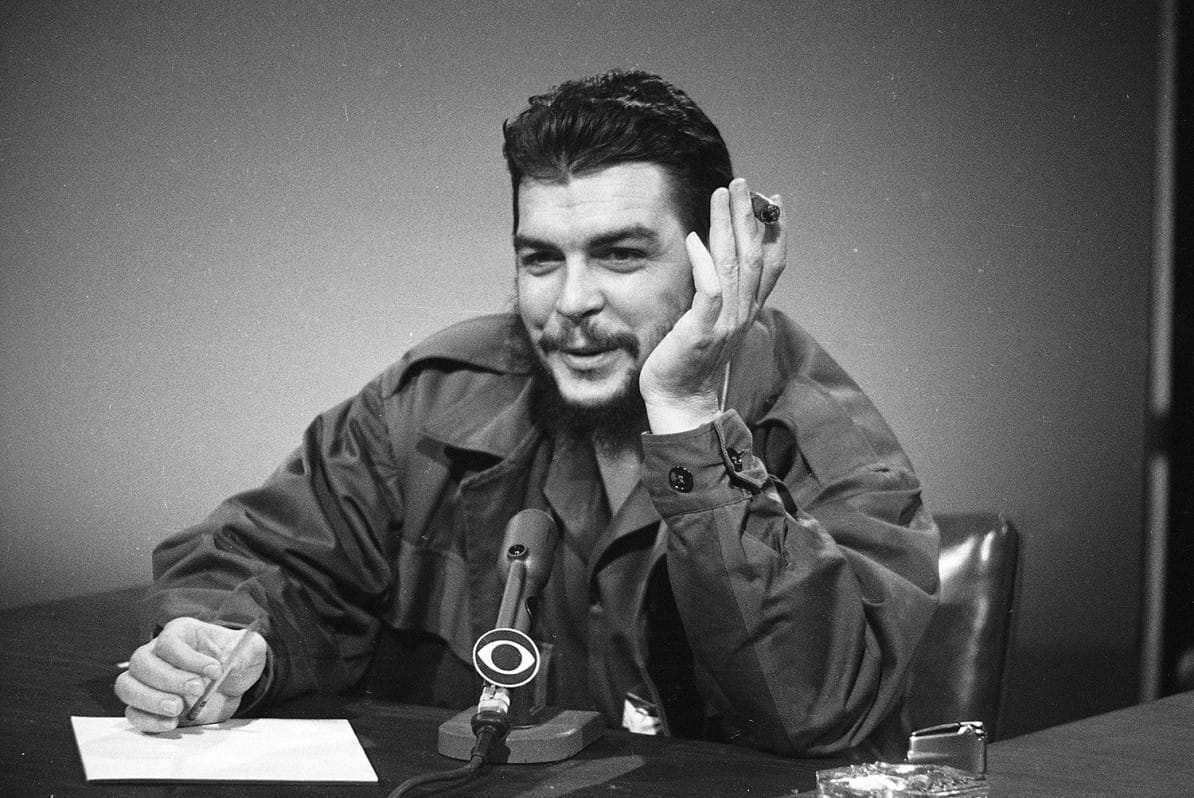
Che Guevara makes an appearance on ‘Face the Nation’ at CBS TV studios in New York City, 13th Dec, 1964. Photo: AP/Press Association Images
21 June 2013 (Taken from: #11)
Bolivia, March 1967
On top of a hill, looking down on the canopy of the Bolivian jungle, stands a man with a gun. He is struck by the strange stillness of his surroundings as he gazes across grassy peaks poking “like dunes in the desert” above the lush vegetation. It’s the beginning of the end, but right now he doesn’t know this. As far as he’s concerned he’s part of a mission that’s going to change the world.
Two figures appear and disappear between the hilltops, winding their way ever closer. It takes hours for them to arrive. “Members of a phantasmagorical platoon approached us,” remembers the watchman, “as if from another world…” He hasn’t seen the leader of this phantom troop for three years. On more than one occasion he has heard rumours of his death. But now here he is. “He had a rifle on his shoulder, a 1930s anarchist’s cap on his head, a thin beard and a pipe hanging from the corner of his mouth,” the watchman remembers. It was Che Guevara. “Che came up to where I was standing, paralysed,” he says. “He took off his rucksack, leaving it on the ground, his M2 leaning against it, and we fell into a prolonged, silent embrace.”
Seven months later Che Guevara would be dead and the man who hugged him on that Bolivian peak would be accused of the betrayal that lead to his murder. That man is Ciro Bustos.
The library of Che
Malmö, Sweden, 2013
Eighty percent of the books in Ciro Bustos’s study are about Che Guevara. Scanning his shelves I see highbrow biographies, military histories of his campaigns in Cuba, Argentina, Guatemala, the Congo and Bolivia. It’s as if Bustos is either perpetually preparing himself to be counsel for his own defence or trying to understand his own history. The tomes include a volume by Che’s French biographer, Pierre Kalfon – the most vocal historian to label Bustos as Guevara’s traitor.
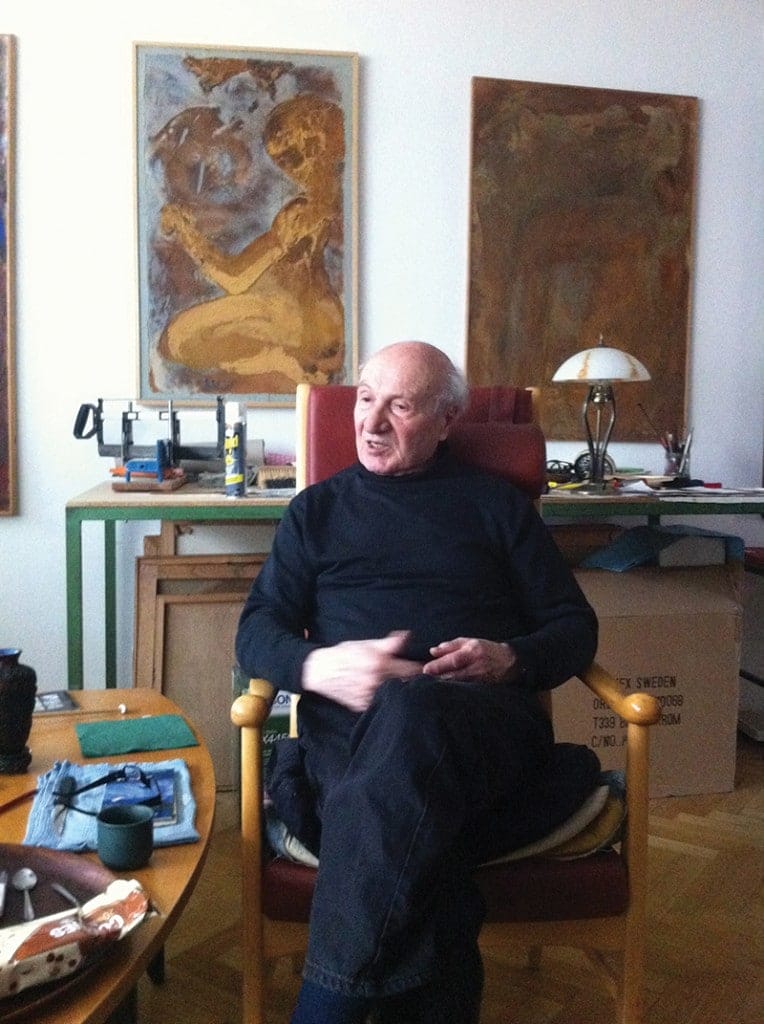
Ciro Bustos at home in Sweden in 2013
Kalfon’s thesis that Bustos was the Judas in the Bolivian set-up was systematically taken apart in the 2001 film ‘Sacrificio: Who Betrayed Che Guevara’? In the film, a slickly edited piece of investigation, Bustos told Swedish journalists Erik Gandini and Tarik Saleh that he suffered from such bad tension headaches, he had to take pills all the time to control them. But today the 81-year-old is not visibly bowed down by the pain of history – there’s a core of steel to him and his eyes occasionally flicker with a hawkish impatience. Throughout the conversation he gesticulates calmly but emphatically – there’s a sense of someone finally getting the chance to tell his side of the story.
When I heard Che talk, it felt of huge personal importance. It was a voice that could have belonged to a brother or friend”
The tale begins in 1958 when Bustos – then an artist living in Argentina – heard a radio interview between Che and journalist Jorge Masetti. “When I heard Che talk, it felt of huge personal importance,” he says. “It wasn’t the arrogant, pompous voice of a politician or professional demagogue. It was a voice that could have belonged to a brother or friend, nothing strident, like having a quiet conversation in a café… Fidel [Castro] was dignity, standing tall, talking to a dormant America. But the other voice spoke to me personally, from conscience to conscience.”
Bustos left Argentina by ship to join the Cuban revolution. Once there, he demonstrated both an enterprise and an intellectual dedication to the cause that soon brought him to the attention of Dr Alberto Granado, who had famously travelled round South America with Che on a motorbike. “I glimpsed that my coming to Cuba was starting to make sense. I was summoned to the ministry of industry at two in the morning,” Bustos recalls, smiling ruefully. There he was introduced to Che. “We sat down to talk just like two Argentines in a café. It wasn’t an exam, just a long exchange of opinions, ideas in common, work experience, mutual friends in Buenos Aires, illusions, disappointments, etc.” At the end of the conversation, it was agreed that Bustos would be part of an advance movement to foment guerrilla war in Argentina. Jorge Masetti – the journalist whose interview with Che had led Bustos to Cuba in the first place – would lead the campaign. It would prove to be a disaster.
The Argentine foco
Masetti, Bustos and a small group of guerrillas entered Bolivia via Prague, Paris and Algiers before finally crossing over the border to Argentina. The fighters were charged with putting into action Guevara’s “foco” theory – the idea that a small nucleus of fighters can eventually overcome a regular army in a country riven by inequality, because the oppressed people will rise up and strengthen a determined struggle for power.
Before long Bustos was exposed to the realities behind Che’s revolutionary rhetoric. Not least of the problems was Masetti’s increasing revelation of dictatorial tendencies as the pressure intensified. When we talk about it, it is the only point in our conversation where Bustos shows distress at what happened in his past. I ask him about the moment when Masetti decided that a member of their group, Miguel, should be executed for insubordination. Bustos’s eyes moisten, and a tremor enters his voice. “That was disgraceful. But it was war. There had to be discipline. The problem was that his actions were jeopardising everyone else in the group.”
Worse was to come. Pupi Rotblat, a recruit from Buenos Aires, found the physical and mental rigours of guerrilla life too demanding, and Masetti decided he should be shot for lowering morale. Another soldier was chosen to shoot the tranquilised Rotblat as he lay in his hammock, but did not aim properly. Rotblat was left wounded but alive and Bustos had to go and finish off the job himself. He reveals that after that no matter how hungry he got, he could not eat horse meat because “it reminded me of the smell of the blood in the hammock of our victim, shot in Salta”.
The operation collapsed in the spring of 1964. While Bustos was on a mission to Buenos Aires, a group of new volunteers who arrived in the jungle turned out to contain two undercover agents from Argentina’s secret police force. When word got to Bustos that the cell had been infiltrated, he fled to Uruguay. But the stamina and initiative he demonstrated during the whole hapless affair convinced Guevara that Bustos should play a larger role in his long-term strategy.
They met again in Havana in 1964. “Che was very relaxed, as if we had seen each other the previous week,” remembers Bustos. “He joked about the fact that I was still alive.” Che ordered Bustos to return to Argentina and coordinate an underground guerrilla front that would be activated later. Guevara, meanwhile, would visit the Congo before attempting to spread the Latin American revolution from Cuba to Bolivia.
Marching to León Felipe
Bustos and Guevara reunited three years later on that Bolivian hilltop. Bustos had travelled to the jungle to train with Che and discuss the next moves for the Argentine cell. Guevara had underestimated the scale of the Bolivia campaign. He had expected to deal only with the Bolivian army, which was notoriously badly trained and equipped and he had failed to anticipate who else would stand against him.
The revolution’s main opponent remained the US, and the CIA backed up the Bolivian forces both with training and on the ground support. The Soviet Union warned that crucial Russian economic assistance to Cuba would be cut if the guerrilla struggle continued in Bolivia. Meanwhile inside Bolivia, communist party leader Mario Monje also didn’t want armed conflict.
Che was facing enemies from all sides and finding the jungle a hard homeland. “His clothes were torn to shreds, a trouser leg was missing, the right sleeve of his khaki shirt hung in tatters but was perfectly buttoned at the wrist,” Bustos remembers. “It was not just any old combat uniform. He was wearing the clothes of universal misery, threadbare and filthy.” Guevara’s health had also deteriorated and he was suffering crippling bouts of acute asthma. Meanwhile, his troops displayed “exhaustion and plummeting morale”.
Bustos has, however, one particularly poignant memory. As they marched one night, he became increasingly disturbed by a continual muffled sound. “It was almost supernatural,” Bustos remembers. “On a flatter stretch, where walking was easier, the mystery revealed itself. The noise began taking shape: I could hear words; harmonious, suggestive, beautiful rhythmic words. It was Che reciting poems by León Felipe as he walked.”
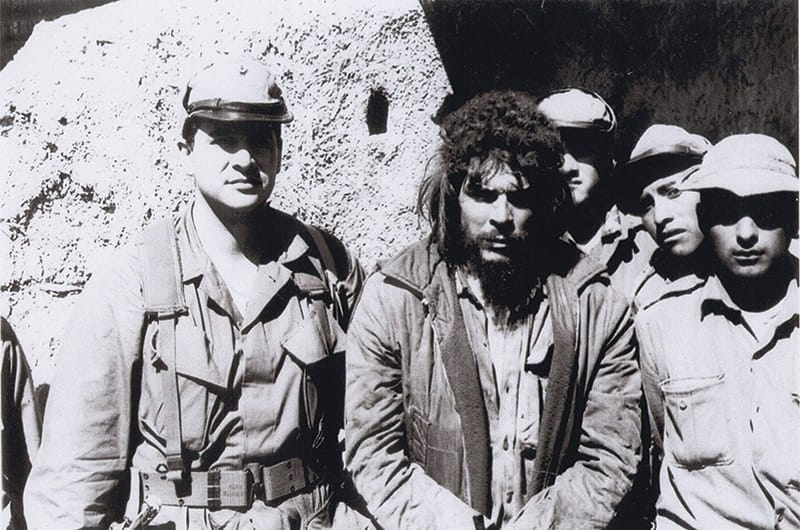
Che Guevara, centre, shortly before his execution at the hands of the Bolivian army. Photo: AP Photo/Courtesy of Felix Rodriguez
On 19th April 1967, Bustos said goodbye to Guevara for the last time. The Bolivian army was approaching and Bustos’s leader ordered him to leave Bolivia alongside the French Marxist theoretician Régis Debray, (who was in the country to meet Guevara), and an Anglo-Chilean journalist, Philip Andrew Roth. Just hours after leaving the camp, they were seized.
At first Bustos convinced his interrogators that he was Carlos Alberto Frutos, a journalist and civil engineer, but when fingerprint records from Argentina revealed his true identity after 20 days, the artist was ordered to draw pictures of the guerrillas and their leader in Bolivia and a map of where the camp was. By this point, Bustos says, he could see his interrogators already had the information they were looking for – but history would not forgive him for his sketches.
The official announced that they had news from Vallegrande. When I heard what it was it felt as if the same bullet that killed Che had hit me”
How does he feel today when he remembers drawing those pictures? A look of weary exasperation crosses his face, and he starts to flick his fingers. “All I did was some pictures of men with beards.” Not all the guerrillas he depicted existed – he recounts to me with some amusement that the CIA spent months chasing two of his invented individuals. But Che was among the pictures and however it was that the Bolivian army found him, when they did there was to be no mercy.
Bustos learned about Guevara’s death on the day of his execution – 9th October 1967. “A soldier entered and started whispering to an official. Then the official announced that they had news from Vallegrande. When I heard what it was it felt as if the same bullet that killed Che had hit me,” says Bustos. The next day he and Debray were sentenced to 30 years in prison.
The blame game
For some people being captured together is a bonding experience, but for Bustos and Debray it was to prove quite the reverse. Debray, an intellectual who had travelled to Cuba after writing ‘Revolution In the Revolution’, an analysis of the changes brought about by Castro and Guevara, quickly won international support not least through his mother’s connections with the De Gaulle government. This meant that he was treated as an international cause célèbre – intellectuals including Jean-Paul Sartre, Bertrand Russell and Hannah Arendt campaigned for his release. Bustos, however, even when his true identity was unmasked, managed to play down his importance in Che’s operation. As a result he was viewed as a minor character, not just by the CIA but by the world.
There were so many factors stacked against the operation from the start that it seems unfair for anyone to pin its downfall entirely on the information given by the two men after they were captured. Even if their interrogation did yield the crucial information, some argue that it was Debray – not Bustos – who provided it. Che’s biographer, Jon Lee Anderson, says that “according to his former interrogators, it was Régis Debray who provided the final confirmation of Che Guevara’s presence in Bolivia. At first, Debray claimed he was a French journalist, having nothing to do with the guerrillas, but after his interrogation became tougher he succumbed, confirming that the guerrilla comandante known as ‘Ramón’ was in fact Che Guevara.” To be fair, both men were in a life and death situation – most of the guerrillas captured after them were executed. And Debray’s international fame as an intellectual made it more difficult for him to conceal his identity.

A small crowd of students demonstrate demanding that Regis Debray be freed by Bolivian authorities on 22nd June 1967 at the Bolivian Embassy in Mexico City. Photo: AP/Press Association Images
But it is Bustos’s reputation that has been most smeared. Richard Gott, the writer and historian, was in Bolivia at the same time as Bustos – and was one of four journalists to see the body of Che Guevara when the Bolivian army brought it to Vallegrande. “Ciro had a very raw deal from the word go,” declares Gott when I speak to him. “People didn’t realise what he was trying to do [under interrogation], which was to protect his Argentine contacts. So he sort of played the fool. I never understood how the idea he was a traitor took off, since the evidence was very slight. All he did was draw pictures of the guerrillas.”
Bustos and Debray spent three years in prison. In December 1970 the two men were released after a Bolivian coup brought to power President Torres, who gave them an official pardon. Debray went on to serve in François Mitterrand’s government, and has a string of publications to his name; Bustos went first to Chile, and then back home to Argentina, but the beginning of the Dirty War there meant he, his second wife Ana Maria (from whom he is separated), and two children had to flee to Sweden in 1976.
I email Debray to ask for his thoughts on the situation. But the academic has not commented on the subject for decades, and I am to prove no exception. So this time, aptly, it is left to Bustos to have the last word. With typical self deprecation he declares: “In the particular bit of history I have related here, especially relating to Che’s aims during the latter stage of his life, everybody lied. Naturally I did too. I lied to the army, to the CIA, to the court and, hence, to public opinion. I lied deliberately and by omission. But I lied to protect the interests of people on the outside and, incidentally, to save my own life; not for personal glorification, quite the opposite, since it cost me my pride and self-esteem. Because lying is a double-edged sword: you lie to defend yourself, but it also destroys you and your reputation. You make a choice, take personal responsibility, balance how much you have to gain against how much you will lose.”
Slow Journalism in your inbox, plus infographics, offers and more: sign up for the free DG newsletter. Sign me up
Thanks for signing up.
